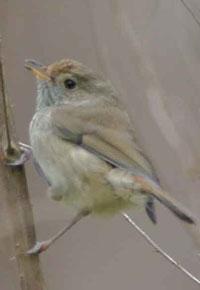| |
| Home |
| Activities Calendar |
| Birding Sites |
| Newsletter Archive |
| Recent Outings |
| Photography Group |
| Contact Us |
| Sherbrooke Forest, Dandenong Ranges National Park |
|
Access: Good access to numerous walking tracks is available from several points including: Grants Picnic Ground (Map 75 Grid K4), Sherbrooke Picnic Ground (Map 75, Grid G2), O’Donohue Picnic Ground (Map 75 Grid G3) and several locations along Sherbrooke Road where off road parking is provided or it is possible to park off the road. Facilities: Parking, toilets (Grants Picnic Ground, Sherbrooke Picnic Ground & O’Donohue Picnic Ground), BBQ’s, partial wheelchair access, kiosk (Grants Picnic Ground) Habitat: The plant communities in the park are remnants of the original vegetation that has receded over the last 150 years with the rapid growth of Melbourne's suburbs. Grants Picnic Ground is a good spot to take overseas visitors as there is usually a large number of Galahs, Long-billed & Little Corellas, Australian King-Parrots, Crimson Rosellas and Sulphur-crested Cockatoos being fed by tourists. Typical Common Birds include: Galah; Long-billed Corella; Little Corella; Sulphur-crested Cockatoo; Australian King-Parrot; Crimson Rosella; Laughing Kookaburra; Superb Lyrebird; White-throated Treecreeper; White-browed Scrubwren; Striated Thornbill; Brown Thornbill; Spotted Pardalote; Eastern Spinebill; Red Wattlebird; Crescent Honeyeater; White-naped Honeyeater; Eastern Whipbird; Golden Whistler; Grey Shrike-thrush; Grey Butcherbird; Australian Magpie; Pied Currawong; Grey Fantail; Eastern Yellow Robin; Silvereye; Common Blackbird. Other Possible Birds include: Shining Bronze-Cuckoo; Fan-tailed Cuckoo; Red-browed Treecreeper; Superb Fairy-wren; Pilotbird; Striated Pardalote; Lewin’s Honeyeater; Yellow-faced Honeyeater; Crested Shrike-tit; Olive Whistler; Grey Currawong; Rufous Fantail; Australian Raven; Little Raven; Rose Robin; Bassian Thrush; Mistletoebird. Outings Bird Lists: For a Bird List of all recent BirdLife Melbourne Outings to this site, click here
Superb Lyrebird
|
|
||


